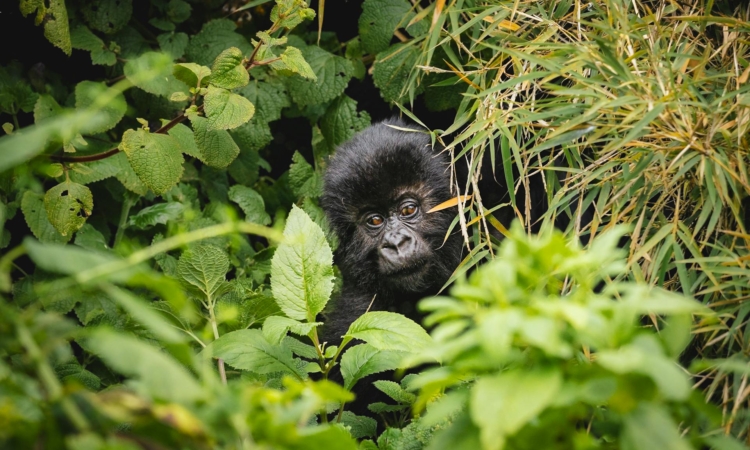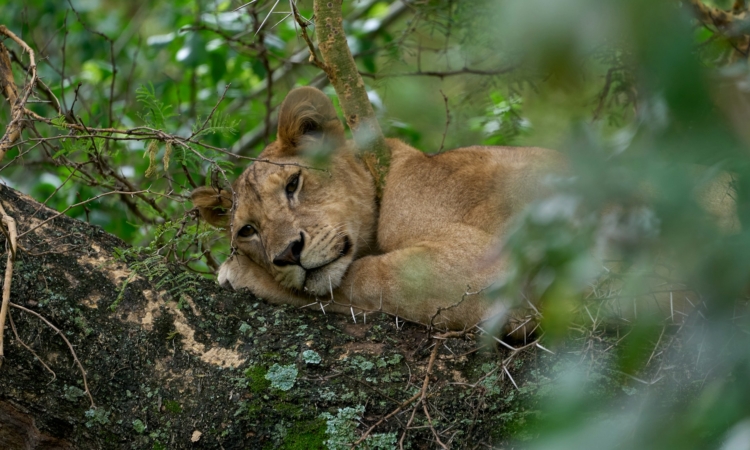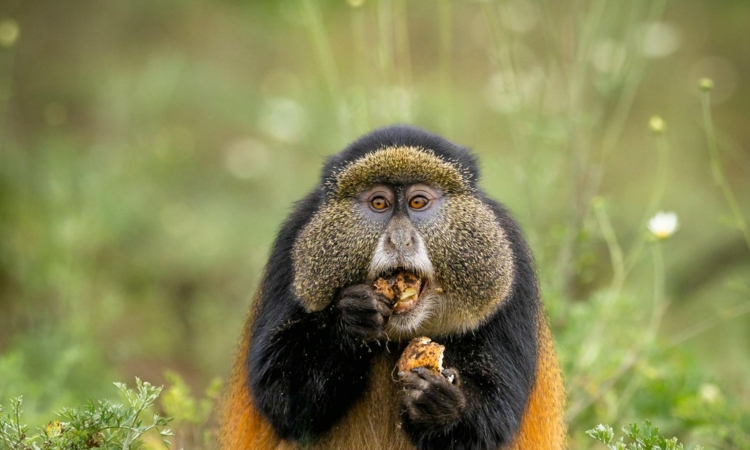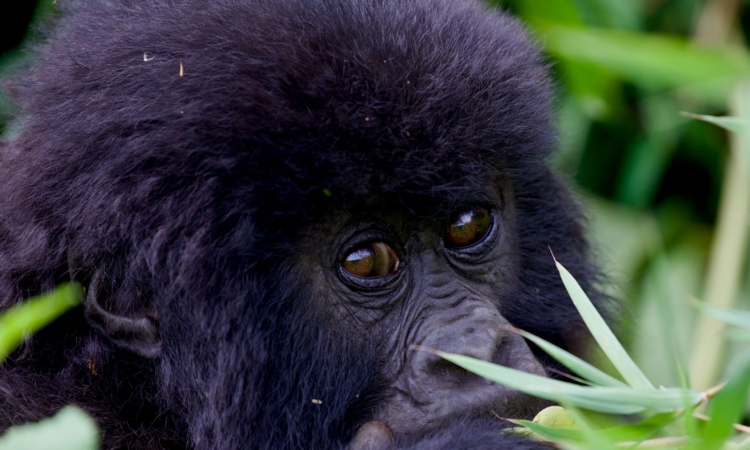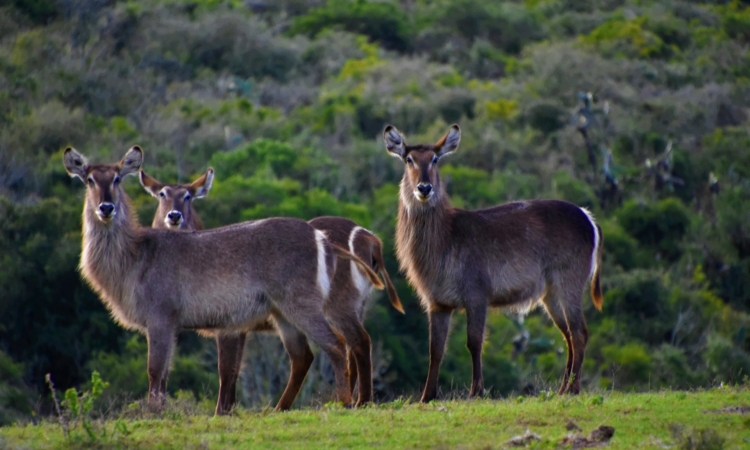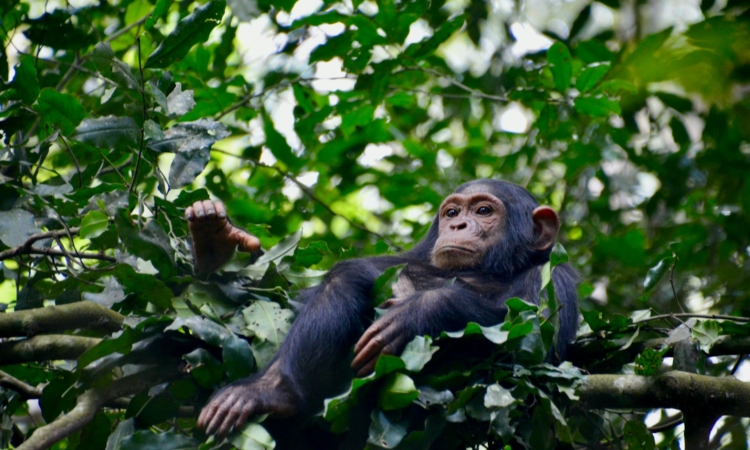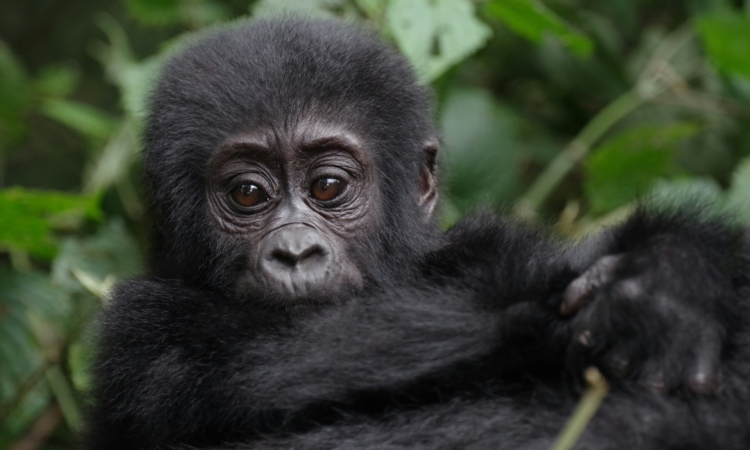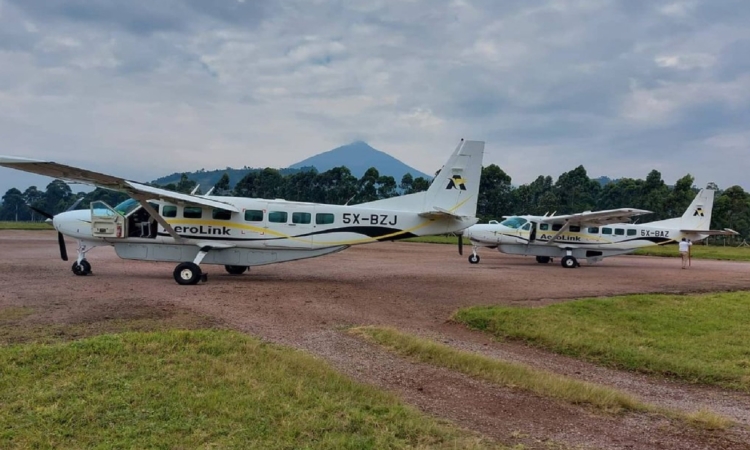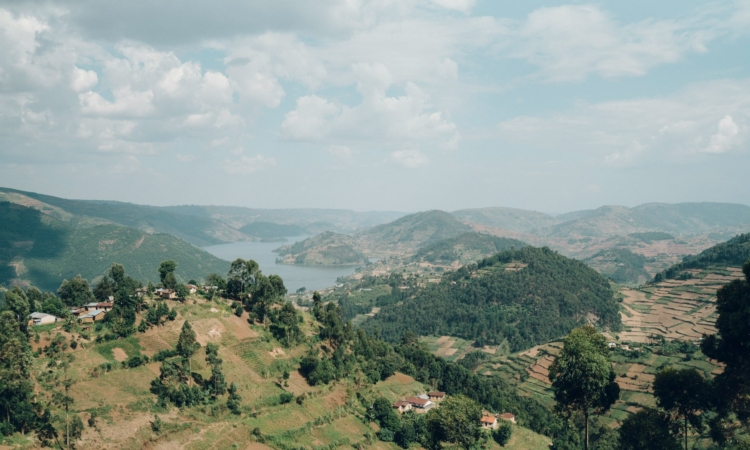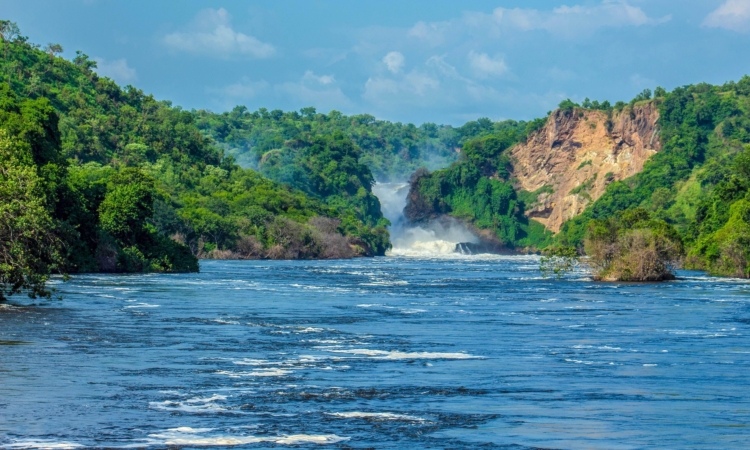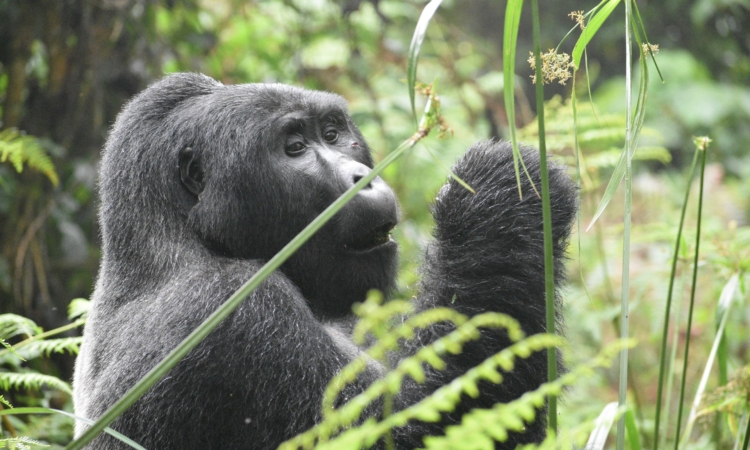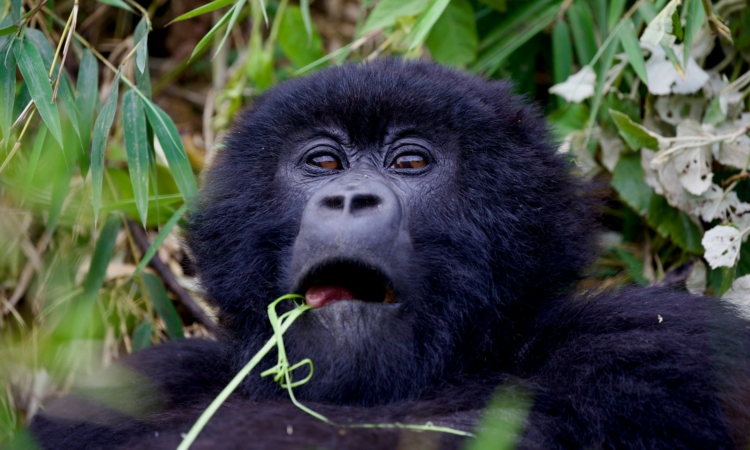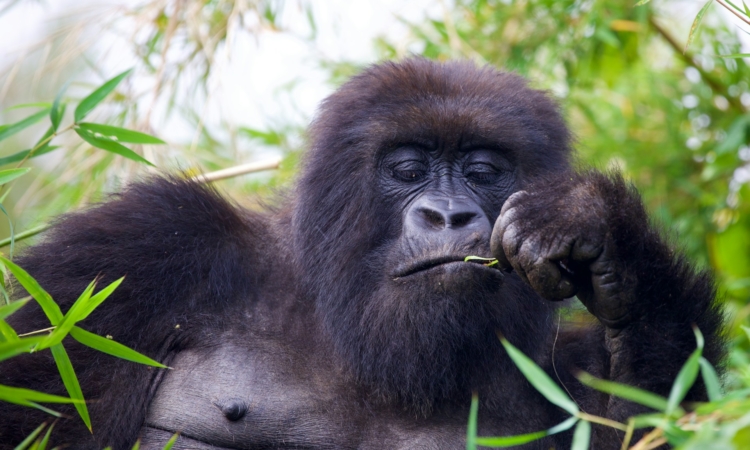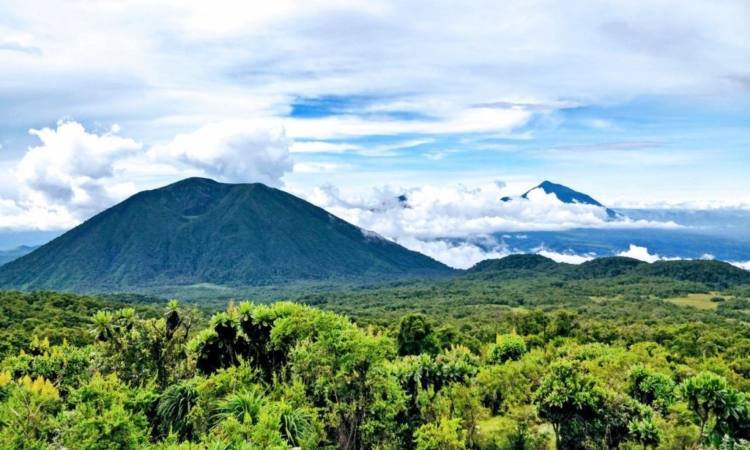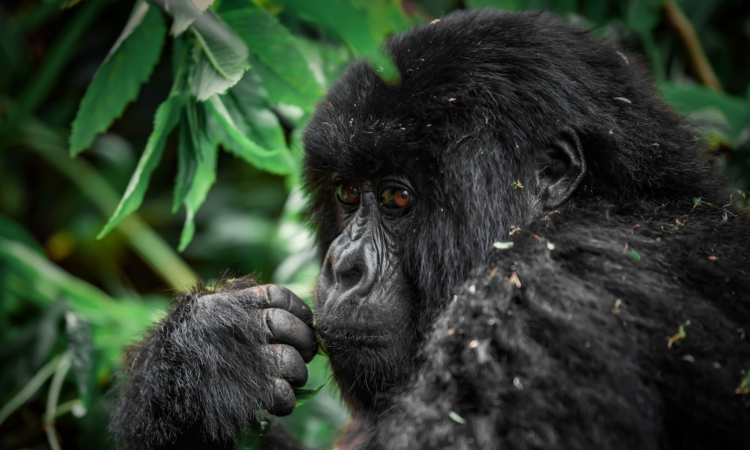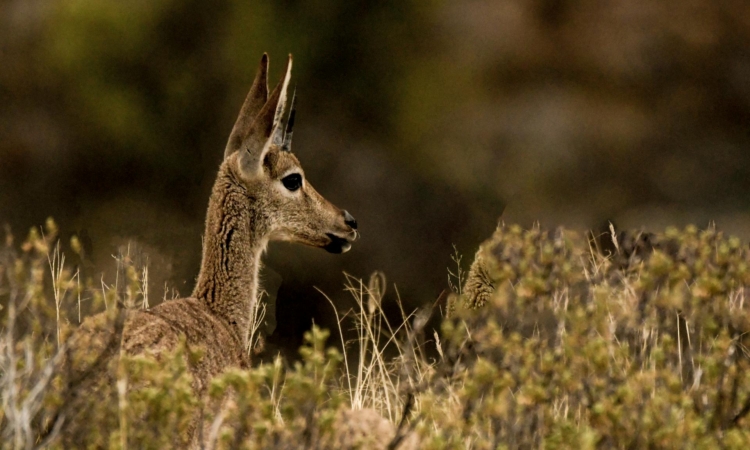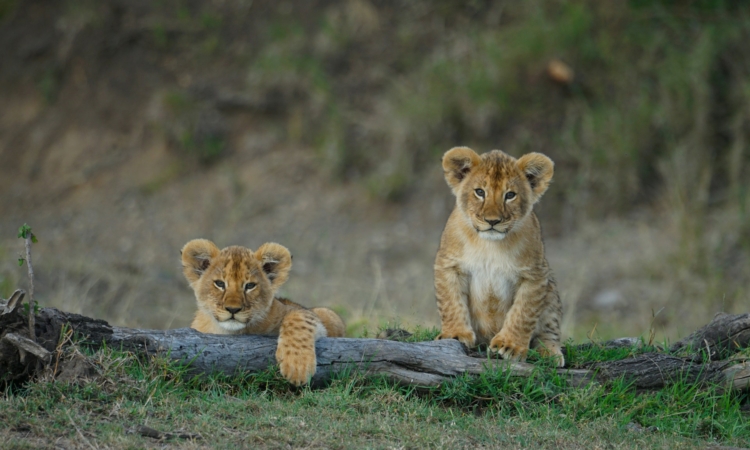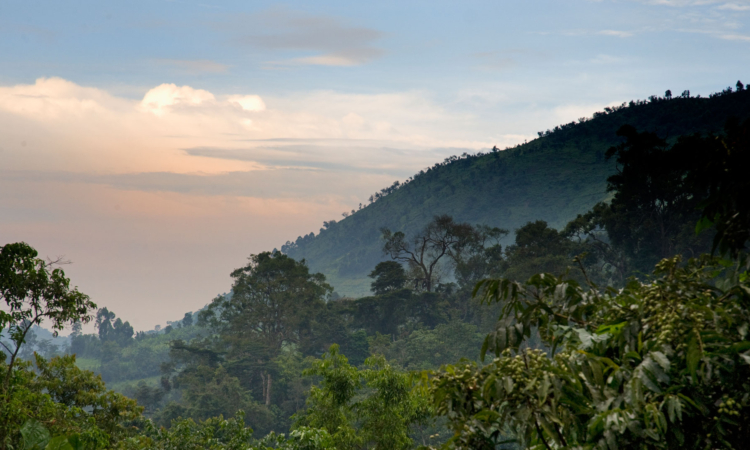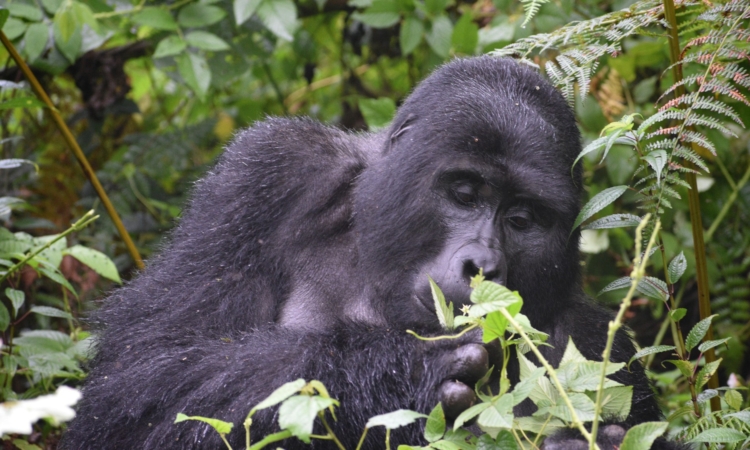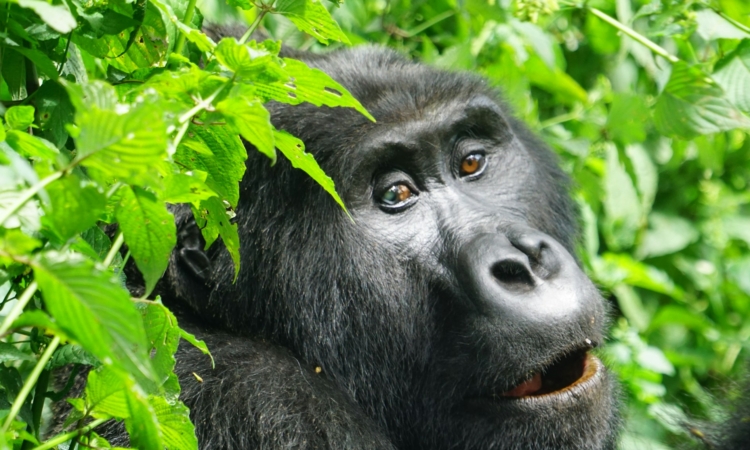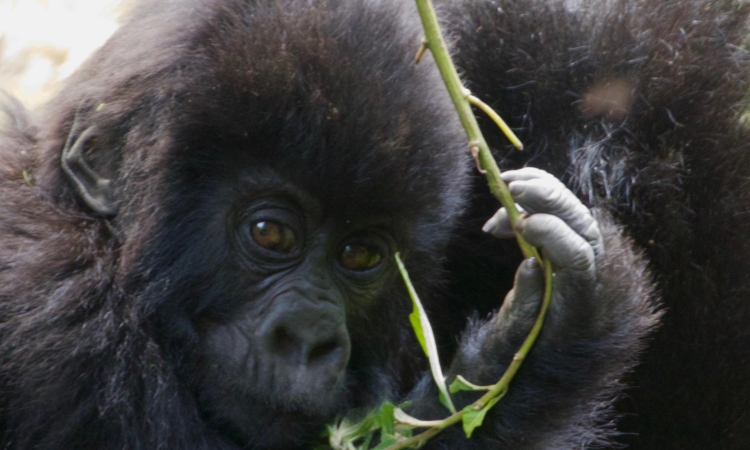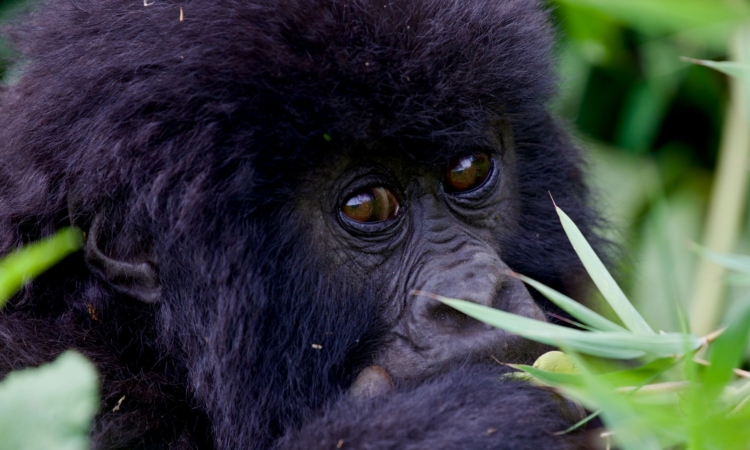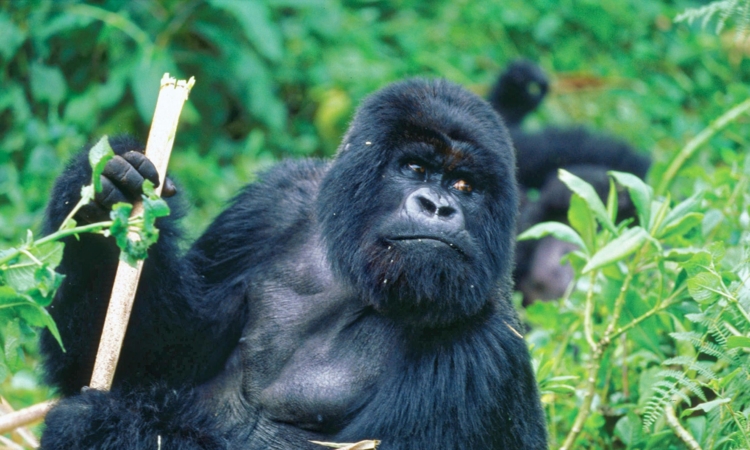Ultimate Guide for Gorilla Trekking in Africa
Gorilla trekking is a guided hike through thick tropical forests to see a specific gorilla family. Trekkers use machetes to clear paths and walking poles for support on slippery slopes.
Mountain gorillas live only in dense, misty rainforests and cannot survive in captivity.
In Uganda, trekking starts at 8:00 a.m. from five locations, with groups of eight people and a park guide. Treks last 2 to 6 hours, including one hour spent watching and learning about the gorillas.
We help plan gorilla trekking trips from many countries, including the United States of America (USA), Australia, Poland, Israel, Saudi Arabia, Dubai, Namibia, Victoria Falls, Brazil, China, Sweden, Netherlands, Germany, Hong Kong, Japan, Canada, Mexico, Switzerland, United Kingdom, Ireland, Singapore and any other country.
Gorilla Trekking in Uganda
Uganda is home to nearly half of the world’s mountain gorillas. You can trek mountain gorillas in two national parks in Uganda.
These parks are Bwindi Impenetrable Forest National Park and Mgahinga Gorilla National Park. Both offer great opportunities to see mountain gorillas in the wild.
Bwindi Impenetrable National Park
Bwindi Impenetrable National Park is located in the Kanungu district in southwestern Uganda. It is home to mountain gorillas and many other species, including 100 types of ferns, 165 types of trees, 220 types of butterflies, 348 types of birds, 28 types of frogs, and 120 types of mammals.
Bwindi was first made a forest reserve in 1932 to protect mountain gorillas and became a national park in 1991.
It has the highest number of mountain gorillas of any gorilla trekking national park.
Mgahinga National Park
Mgahinga National Park is located in the southwestern corner of Uganda and covers an area of 33 square kilometers, making it the country’s smallest national park.
It is home to three of the Virunga massif volcanoes: Mount Sabyinyo, Mount Gahinga, and Mount Muhavura.
The park offers gorilla trekking in Uganda. It is also home to endangered golden monkeys found only in the Virunga region.
Gorilla Trekking in Rwanda
Rwanda is one of the African countries that offers gorilla trekking to travelers. While in Rwanda, tourists can trek mountain gorillas in Volcanoes National Park.
Volcanoes National Park
Volcanoes National Park is found in the southwestern part of Rwanda and covers an area of 168 square kilometers.
It was first gazetted in 1925 to protect mountain gorillas from poaching and was upgraded to national park status in 1929, becoming the first national park established in Africa.
The park is home to endangered mountain gorillas, golden monkeys, 178 bird species, and several other mammals.
Gorilla Trekking in Congo
Tourists can also trek mountain gorillas in Congo, as well as lowland gorillas in the wild areas of Kahuzi-Biega National Park.
Virunga National Park
Virunga National Park in Congo, established in 1925, offers mountain gorilla trekking. Despite past political unrest, wildlife has grown, and it hosts the only mountain gorilla orphanage.
Gorilla permits cost $400 per person in peak season and $200 for low season trekking.
Kahuzi-Biega National Park
Kahuzi-Biega National Park, made a reserve in 1937 and a park in 1970, has mountain and eastern lowland gorillas. Most visitors trek eastern lowland gorillas.
Two habituated eastern lowland gorilla families are open for trekking. Permits cost $400 in peak season and $200 in low season per person.
Best Gorilla Trekking Parks in Africa
Bwindi Impenetrable National Park
Bwindi is the best national park for mountain gorilla trekking in Africa. It offers cheaper permits than Rwanda. Congo has cheaper permits but security is not always sure.
Travelers should check Congo’s safety before visiting. Recently, the situation in Congo has been peaceful for gorilla trekking.
Trekking with Gorillas in Bwindi
Bwindi Impenetrable National Park has 19 habituated gorilla families, with two still being habituated. Visitors who want more time with gorillas can book gorilla habituation permits.
Trekking time varies from 1 to 7 hours, depending on where the gorilla family is and how fast hikers walk. Tourists should book accommodation after getting permits because the park has four sectors.
It is best to stay in the sector where you will trek gorillas to make the experience easier and more comfortable.
Bwindi is a top place to see mountain gorillas in their natural home. You can actually begin your Bwindi tour from Kigali in Rwanda.
And for solo travelers, it is easy to get discounts in Bwindi.
Trekking with Gorillas in Volcanoes National Park
Gorilla trekking in Rwanda happens at Volcanoes National Park, the easiest mountain gorilla park to visit. Treks start early with a briefing at the park headquarters.
Tourists are assigned to gorilla families based on their age and physical fitness.
Each gorilla family is visited by a group of only eight people. This small group size helps protect the gorillas and gives visitors a better experience.
The park offers a safe and organized way to see mountain gorillas in their natural home. It is a popular destination for people wanting to trek mountain gorillas in Africa.
Trekking with Gorillas in Virunga National Park
Virunga National Park has eight habituated mountain gorilla families, with two still being habituated. Visitors can also see the Senkwekwe Gorilla Orphanage, the only one of its kind in the world.
Gorilla trekking starts early with a briefing at Bukima Ranger Post. Tourists are assigned to gorilla families and spend 1 to 3 hours searching, depending on the gorillas’ location and hikers’ fitness.
Once found, visitors spend one hour with the gorillas. During the visit, tourists must keep a safe distance while observing and taking photos to protect the gorillas and themselves.
Trekking with Gorillas in Kahuzi-Biega National Park
Kahuzi-Biega National Park is in Bukavu, Congo. Visitors can trek eastern lowland gorillas or mountain gorillas, but most choose eastern lowland gorillas.
There are two habituated eastern lowland gorilla groups available for trekking. Tourists must have a permit to trek a specific gorilla family.
Trekking starts early in the morning with a briefing from park rangers. The time spent trekking depends on the gorilla family’s location and the group’s fitness.
Once the gorillas are found, visitors can spend one hour observing and taking photos of the gorillas in their natural habitat.
Cost of Gorilla Trekking
Before trekking mountain gorillas in Africa, tourists must buy a gorilla trekking permit to visit the gorilla families. Permit costs vary by country and depend on accommodation choices.
In Uganda, permits cost $800 per person. In Rwanda, permits cost $1500, and in Congo, permits cost $400.
These prices only cover the permit and do not include accommodation, transportation, or other activities. Tourists should plan for these extra costs when booking their gorilla trekking trips.
Getting a permit is required to protect gorillas and control the number of visitors in the parks.
Budget Gorilla Trekking Safaris
Budget gorilla trekking is available in Uganda’s Bwindi and Mgahinga National Parks, with permits costing $800.
Low-budget travelers can also trek in Congo’s Virunga National Park, which offers the cheapest gorilla permits compared to Rwanda and Uganda.
Congo is best for affordable mountain gorilla trekking.
Luxury Gorilla Trekking Safaris
Rwanda offers a luxury gorilla trekking experience with permits costing $1500 per person. Travelers fly into Kigali International Airport and drive about 3 hours to Volcanoes National Park.
Luxury lodges include Bisate Lodge, Mountain Gorilla View Lodge, Virunga Lodge, Sabyinyo Silverback Lodge, and Five Volcanoes Boutique Hotel. Luxury trekking is also available in Uganda.
Visitors fly into Entebbe International Airport and connect to Kihihi or Kisoro Airstrip, then transfer to their lodge.
Top luxury lodges in Uganda include Trackers Safari Lodge, Nkuringo Bwindi Gorilla Lodge, Clouds Mountain Gorilla Lodge, Buhoma Lodge, Volcanoes Bwindi Lodge, and Sanctuary Gorilla Forest Lodge.
Gorilla Habituation in Bwindi
Gorilla habituation is the process of helping wild gorillas get used to humans in their natural home. It started in Uganda in 2014. The process takes 2 to 3 years, with rangers and researchers visiting the gorillas daily to study their behavior and give them names.
When ready, gorillas do a mock test before being open for trekking. Gorillas are the largest primates and share 98% of their DNA with humans.
They cannot survive in zoos and are only found in a few African countries.
Money from gorilla permits helps protect them and supports conservation for future generations.
Is Gorilla Trekking Worth It?
Gorilla trekking is worth it because buying a permit helps protect mountain gorillas in the wild. It also supports local communities living near gorilla parks.
Part of the money from permits is used to build schools, hospitals, and improve lives. Gorillas cannot survive in zoos, so trekking gives people a chance to see them in their natural home.
Visiting gorillas not only offers a special wildlife experience but also helps in their conservation and supports the well-being of nearby communities.
This is one of the best ways to protect gorillas for future generations while helping local people.
Gorilla Permits in Uganda, Rwanda & Congo
All tourists must buy gorilla trekking permits before trekking in Uganda, Rwanda, or Congo. It is best to book permits online or with a travel agent at least three months before arrival, especially in the peak season.
Permits are valid for one day and prices vary by country. In Uganda, permits cost $800 and $1500 for gorilla habituation.
In Rwanda, permits cost $1500, with a discount of $1050 from November to April if combined with another national park visit.
Congo offers the cheapest permits at $400 in the peak season and $200 in the low season, good for budget travelers.
Guidelines for Gorilla Trekking
Gorilla trekking rules help protect mountain gorillas, trekkers, and the forest. These rules apply in Uganda’s Bwindi and Mgahinga, Rwanda’s Volcanoes, and Congo’s Virunga and Kahuzi-Biega.
Treks start in the morning when gorillas are active.
Key rules include:
- You must be 15 years or older to see gorillas.
- Only 8 people can visit one gorilla group each day.
- Do not trek if you have flu, cough, or diarrhea.
- Wash your hands before the trek.
- Stay at least 7 meters away from the gorillas.
- Keep quiet. No loud noise.
- Do not run if a gorilla charges. Stay calm and look down.
- Do not eat, drink, or smoke near gorillas.
- Do not use camera flash or move suddenly.
- Always follow your guide’s instructions.
- You can only spend 1 hour with the gorillas.
- Do not touch the gorillas.
- Stay close to your group.
- Do not litter. Keep the park clean.
- If you feel sick after the trek, report to the park staff.
Following these rules protects both the gorillas and visitors and helps secure gorilla conservation for future generations.
Best Time to Go Gorilla Trekking
Gorilla trekking is possible all year, but the best time is during the dry seasons from June to September and December to February. In the dry season, trekking is easier because the trails are not slippery or muddy.
The weather is better for hiking through the rainforests to find gorilla families. Some parks and lodges offer cheaper permit and accommodation rates during the wet season to help budget travelers.
In the rainy months, gorillas stay closer because fruits are ripe, making it sometimes easier to find them without walking too far. Both seasons offer chances to see mountain gorillas.
About Mountain Gorillas
Mountain gorillas are an endangered type of eastern gorillas found in the Virunga region of Uganda, Rwanda, and Congo, and also in Bwindi Impenetrable National Park in Uganda.
They have thick fur that helps them live in cold, high-altitude rainforests between 8,000 and 13,000 feet. Fewer than 1,500 mountain gorillas remain in the wild.
Male mountain gorillas can weigh up to 185 kilograms and stand between 161 to 171 centimeters tall. Females weigh up to 90 kilograms.
Male gorillas have a large top and back of the skull, which gives their heads a cone-like shape.
About Lowland Gorillas
Eastern lowland gorillas are a critically endangered subspecies found only in the rainforests of the Democratic Republic of Congo. They live in Kahuzi-Biega, Tayna, Maiko, Itombwe, and Usala.
They are the largest gorilla type with bulky skulls, big hands, and stocky bodies but shorter hair than mountain gorillas.
Their numbers have dropped to around 6,800 due to poaching, habitat loss, and political unrest. Males weigh between 150 to 209 kilograms and are 1.96 meters tall.
Females weigh 76 kilograms and are 1.6 meters tall. Eastern lowland gorillas have the widest altitude range and prefer regenerating vegetation in their habitat.
Where to See Gorillas in Africa
Gorillas are divided into four types: mountain gorillas, eastern lowland gorillas, western lowland gorillas, and cross river gorillas. They live in East, West, and Central Africa, including Uganda, Rwanda, and Congo.
The best places for mountain gorilla trekking are Uganda and Rwanda. Gorillas are the largest primates and share 98% of their DNA with humans.
They are critically endangered and cannot survive in zoos. Gorilla trekking helps protect them, as money from permits supports conservation and local communities.
If you want to see gorillas in the wild, you can only do so in Africa through Uganda or Rwanda tours.
 On Offer
On Offer On Offer
On Offer On Offer
On Offer On Offer
On Offer
